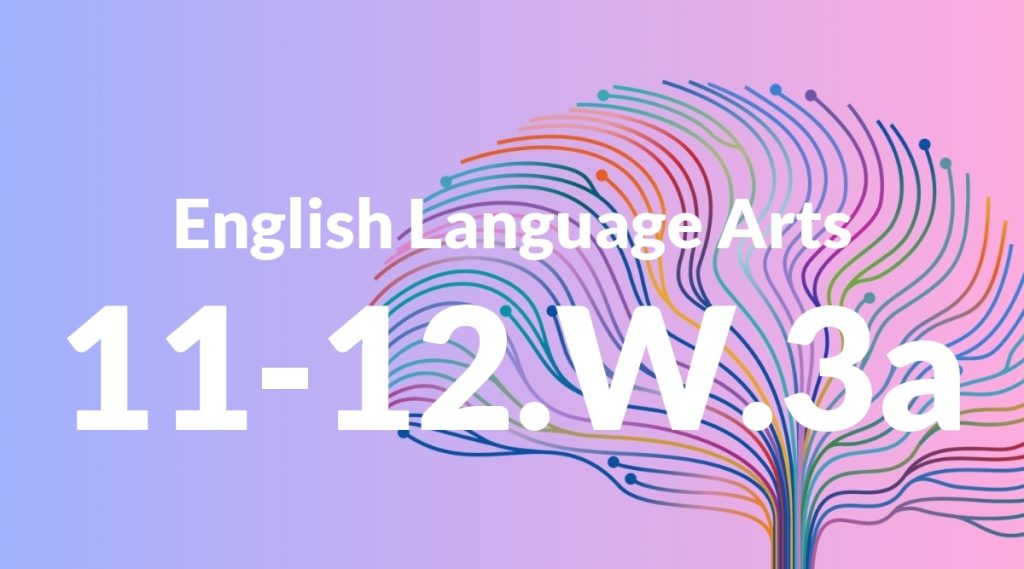Standard: 11-12.W.3a – Engage and orient the reader by setting out a problem, situation, or observation and its significance, establishing one or multiple point(s) of view, and introducing a narrator and/or characters; create a smooth progression of experiences or events.
Grade level: Grade 11-12
Subject: English Language Arts
Domain: Writing
Teacher Overview
This standard emphasizes the importance of engaging readers by clearly presenting a problem, situation, or observation and its significance. It encourages students to establish points of view and introduce narrators and characters effectively, ensuring a smooth progression of events. Mastering this skill is crucial as it lays the foundation for advanced narrative writing techniques that students will use in both academic and creative contexts. Students should have a good grasp of basic narrative elements such as plot structure, character development, and point of view. They should also be comfortable with writing short narratives and have some experience in reading and analyzing narrative texts.
After mastering this standard, students will be adept at using narrative techniques to enhance their writing across various genres. They will also develop critical thinking skills that enable them to analyze and critique narrative works more effectively.
Common Misconception 1
One common misconception is that narratives must follow a strict chronological order. This is incorrect because many effective narratives use flashbacks, foreshadowing, and other non-linear techniques to create a more engaging and complex story.
Intervention 1
To address this misconception, provide students with examples of non-linear narratives from literature and film. Conduct writing exercises that encourage students to experiment with different narrative structures, such as starting in the middle of the action or using flashbacks.
Common Misconception 2
Another misconception is that a narrative can only have one point of view. This is not true, as many successful narratives employ multiple points of view to provide a richer and more nuanced perspective on the story.
Intervention 2
To counter this misconception, introduce students to works that use multiple points of view. Have them practice writing scenes from different characters’ perspectives and discuss how this technique can add depth to their narratives.
Prerequisite Knowledge
Students should have a basic understanding of narrative structure, including exposition, rising action, climax, falling action, and resolution. They should also be familiar with different points of view (first person, third person) and have some experience in writing short narratives or essays.
Subsequent Knowledge
After mastering this standard, students will be able to effectively use narrative techniques to enhance their writing in various genres, including fiction, non-fiction, and multimedia. They will also be better prepared to analyze and critique narrative works, understanding the author’s choices and techniques.
Instructional Activities
- Write a short story using a non-linear structure.
- Create a character profile and write a scene from their perspective.
- Analyze a film or book that uses multiple points of view and discuss its impact on the story.
- Write a personal narrative essay that highlights a significant event in your life.
- Develop a script for a short film, focusing on establishing a clear problem or situation and its significance.




